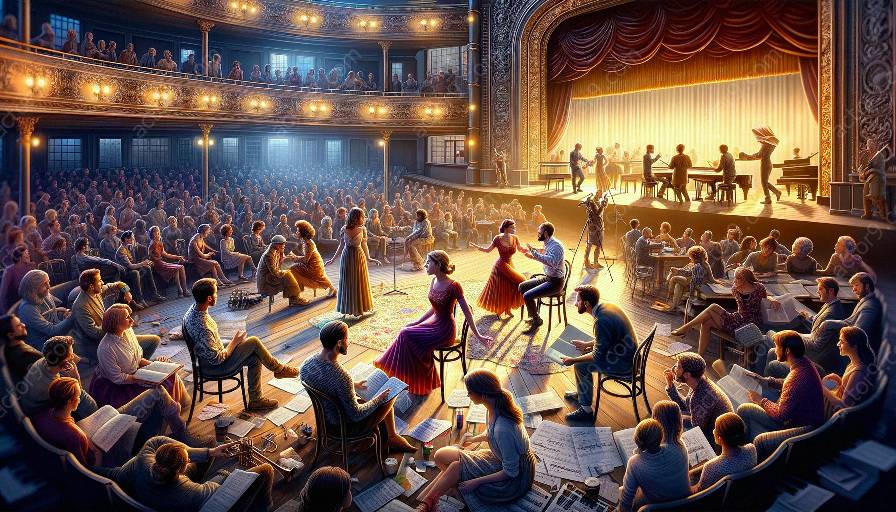Musical theatre collaboration involves a complex interplay of artistic, technical, and interpersonal elements that contribute to the creation and production of a successful musical performance. At the heart of this dynamic process, issues of gender, diversity, and inclusion play a crucial role in shaping the narratives, casting decisions, and behind-the-scenes interactions that define the world of musical theatre.
The Significance of Gender, Diversity, and Inclusion
Gender in Musical Theatre
From the early days of musical theatre to contemporary productions, gender dynamics have significantly impacted the storytelling, character development, and representation on stage. The roles and expectations assigned to male and female characters have evolved over time, reflecting the changing societal attitudes towards gender identity and expression.
In recent years, there has been a growing awareness and emphasis on gender diversity and inclusivity, fostering a more inclusive and representative portrayal of gender in musical theatre. Examples of non-binary and transgender characters in prominent musicals have highlighted the evolving landscape of gender representation in this art form.
Diversity in Casting
One of the fundamental aspects of musical theatre collaboration is casting, where the selection of performers from diverse ethnic, cultural, and racial backgrounds contributes to the depth and richness of the storytelling. Embracing diversity in casting not only enhances the authenticity of characters and narratives but also fosters a more inclusive environment both on stage and behind the scenes.
In a global context, musical theatre has the potential to celebrate diversity by incorporating performers from various cultural heritages, thereby offering a platform for cross-cultural exchange and appreciation.
Inclusion in the Creative Process
Creating an inclusive environment within the creative team is essential for fostering a collaborative and harmonious process. Embracing diverse perspectives and voices in the writing, composing, choreographing, and directing stages of musical theatre production can lead to more nuanced and impactful storytelling.
Challenges and Opportunities
Challenges
Despite the progress made in promoting gender diversity and inclusivity in musical theatre, there remain challenges such as stereotyping, typecasting, and underrepresentation of certain marginalized groups. Overcoming these challenges requires a continuous effort to break down barriers and promote equal opportunities for all artists and creators.
Opportunities
On the flip side, the advancements in technology, changing audience demographics, and evolving societal attitudes provide opportunities for innovation and experimentation in addressing gender, diversity, and inclusion in musical theatre collaboration. The digital age has opened up new avenues for global collaboration, allowing diverse artists to connect and create boundary-pushing musical theatre experiences.
The Impact on Audience Engagement
The portrayal of gender, diversity, and inclusion in musical theatre not only influences the creation of the art itself but also shapes audience perceptions and emotional resonance. Productions that authentically and respectfully integrate diverse perspectives resonate with a broader audience, fostering empathy, understanding, and appreciation for different experiences and identities.
Conclusion
Gender, diversity, and inclusion are integral elements of musical theatre collaboration that continue to evolve and influence the creative landscape. By acknowledging and embracing the multifaceted nature of these factors, the musical theatre community can inspire meaningful conversations, foster inclusivity, and create impactful performances that resonate with diverse audiences around the world.




































